Air of Authority - A History of RAF Organisation
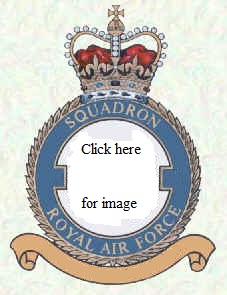 Formed
as a training unit at Gosport on 7 January 1917, it disbanded on 4 July 1918.
It reformed at Wyton two weeks after the Armistice (25 November 1918) in the fighter role
being composed of Canadian personnel, with the alternative designation, No 1
Squadron, Canadian Air Force. However, it disbanded on1 February 1920.
Formed
as a training unit at Gosport on 7 January 1917, it disbanded on 4 July 1918.
It reformed at Wyton two weeks after the Armistice (25 November 1918) in the fighter role
being composed of Canadian personnel, with the alternative designation, No 1
Squadron, Canadian Air Force. However, it disbanded on1 February 1920.
Reformed from the Communication Squadron at Mountjoie in France on 1 December 1939, it flew Tiger Moths until the German invasion necessitated its withdrawal back to Britain, where it disbanded on 15 June 1940. Just over a year later, it reformed at Leconfield on 29 July 1941 in the fighter role, equipped with Hurricanes. In September it moved to North Russia, flying its aircraft from HMS Argus, here it flew operations as well as training Russian pilots to operate the Hurricanes, which were then left with the Russians when the squadron returned to Turnhouse in November.
In January 1942 it re-equipped with Spitfires, which it used operationally for the first time on 1 February 1942. It operated in the North of England and Scotland until May when it joined No 11 Group at Hornchurch, taking part in offensive operations until October. It now became part of the air assets involved in the invasion of North Africa (Operation Torch), when it moved to Gibraltar. From here it moved into its new home at Maison Blanche on 8 November. It them provided support for the 1st Army until the campaign in North Africa ended.
In June 1943 a move to Malta allowed it to support the Allied invasion of Sicily and in September it transferred to the Italian mainland but in November it was transferred to India. Its aircraft arrived at Alipore in early December 1943 and the squadron began ground support operations in January 1944, maintaining these until August 1944 when the squadron moved to Ceylon, where it disbanded on 20 June 1945. The same day No 123 Squadron, which was re-equipping with Thunderbolts at Bobbili, was re-numbered No 81. However, the war ended before the squadron could become operational on its new aircraft, but it was sent to Java in October in the tactical reconnaissance and convoy protection role, finally disbanding on 30 June 1946.
No 81 Squadron reformed on 1 September 1946 at Seletar in Singapore when No 684 Squadron was re-numbered. It was now operating in the Photo-Reconnaissance role equipped with Mosquitoes and later some Spitfires. It remained in the Far East, being heavily involved in Operation Firedog from 1947, moving to Changi in October 1947, Tengah in February 1948 before returning to Seletar in March 1950. The squadron holds the distinction of carrying out the last operational flights of both the Spitfire (1 April 1954, flown by the squadron CO, Sqn Ldr W P Swaby) and the Mosquito (15 December 1955). From December 1953 it began to operate Meteor PR Mk 10s and in 1956 some Pembroke C (PR) Mk 1s were received with Canberras beginning to arrive in 1958, but it was three years before these fully supplanted the Meteors, having Moved to Tengah in April 1958. No 81 Squadron finally disbanded as the Far East Air Force was being run down on 16 January 1970.
| Standards | Battle Honours* |
| Award
of Standard originally announced on 30 Jun 1964, effective from 1 Apr 1964
but presented:-
? |
France & Low Countries, 1939-40: Russia, 1941: Fortress Europe, 1942: Home Defence, 1942: Channel & North Sea, 1942:Dieppe: North Africa, 1942-43: Mediterranean, 1943: Sicily, 1943: Salerno: Italy, 1943: Burma 1944: Arakan, 1944: North Burma, 1944: Manipur, 1944 |
Squadron Codes used: -
| WK | Allocated Apr 1939 - Sep 1939 |
| Russian Characters | These were carried whilst the squadron was serving in the USSR, Jul - Nov 1941 |
| FL | Dec 1941 - Jun 1946 |
[Aircraft & Markings | Commanding Officers]
e-book by Susan Steel about her late Father's, George Bett, memories of his experiences in WW2 serving as an armourer
No 82 (United Provinces) Squadron
 Formed
at Doncaster on 7 January 1917 as a Corps reconnaissance unit equipped with
Armstrong Whitworth FK8s, it moved to the Western Front in November, operating
for the remainder of the war in its designated role. It returned to the
Shoreham in February 1919, moving to Tangmere in May, where it disbanded on 30
June 1919.
Formed
at Doncaster on 7 January 1917 as a Corps reconnaissance unit equipped with
Armstrong Whitworth FK8s, it moved to the Western Front in November, operating
for the remainder of the war in its designated role. It returned to the
Shoreham in February 1919, moving to Tangmere in May, where it disbanded on 30
June 1919.
The squadron reformed at Andover from 'B' Flight of no 142 Squadron in the light bomber role on 14 June 1937, equipped with Hawker Hinds. This was only intended as interim equipment and in March 1938, it received Blenheim Mk Is. By the outbreak of war, the squadron had re-equipped with Blenheim IVs, which it used against German lines of communications and later invasion barges in the channel ports.
In 1940 the squadron received a new commanding officer in the form of Wing Commander The Earl of Bandon. On 17 May 1940, his squadron was detailed to carry out a raid against German columns around Gembloux. When the expected fighter escort did not arrive, having already been intercepted by Bf109's, the twelve Blenhiems pressed on to the target and were
themselves attacked by Bf109's. All but one of the aircraft were shot down and that one collapsed when it landed back at base. Faced with a squadron consisting of himself, one flight commander, two Sergeant pilots and the ground crews, it was planned to disband the squadron but Paddy Bandon put forward the case on behalf of the ground crews that the squadron should be re-equipped and won the day. That evening twelve new Blenhiems were delivered together with their crews. The following day they carried out a practice flight and that night he led six of them on raid into Germany. This quality of leadership earned him a well deserved DSO.
With the Battle of Britain over, the squadron then began anti-shipping operations but in June 1941 most of the squadron moved to Malta. However, in March 1942, the squadron was transferred to the Far East, leaving its Blenheims on Malta for distribution amongst other units. Although the squadron arrived at Karachi in May, it was August before any aircraft were received in the form of Vengence dive-bombers. These were initially used in the coastal patrol role until June 1943, when it began bombing raids against the Japanese in Burma. In July 1944, No 82 received Mosquito VIs, which it operated until 12 May 1945 against Japanese ground targets, at which point it was withdrawn to India to prepare for the invasion of Malaya. In the event the dropping of the atomic bombs on Japan negated the need for the invasion and No 82 Squadron disbanded at St. Thomas Mount on 15 March 1946.
The squadron soon reformed, on 1 October 1946, at Benson, from a nucleus of a flight of No 541 Squadron. Equipped with Lancaster PR Is and Spitfire XIXs, it undertook a photographic survey of the Gold Coast (Ghana), Gambia, Nigeria and Sierra Leone, which lasted until May 1947, when it re-located to Kenya and completed a similar survey of East Africa before returning to the UK in October 1952. From Benson and Wyton from March 1953, the squadron carried out a survey of Germany, re-equipping with Canberras in 1953 before disbanding on 1 September 1956. Its last incarnation, so far, began on 22 July 1959 when it reformed as a Thor Intermediate Range Ballistic Missile unit at Shepherds Grove, finally disbanding on 10 July 1963.
Squadron Codes used: -
| OZ | Allocated Nov 1938 - Sep 1939 |
| UX | Sep 1939 - Mar 1946 |
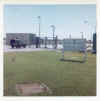 |
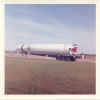 |
| Entrance to No 82 Squadron's base at Shepherd's Grove | A Thor IRBM of No 82 Squadron on its trailer at Shepherd's Grove |
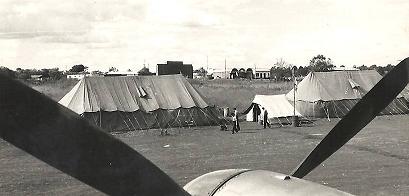 |
| No 82 Sqn tents at Eastleigh in Kenya |
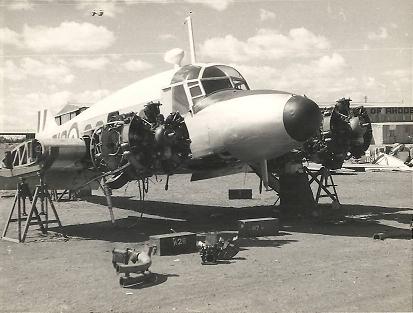 |
| Avro Anson undergoing repair |
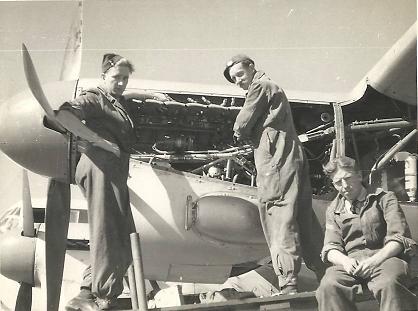 |
| Airmen working on the Merlin engine of an 82 Sqn Lancaster |
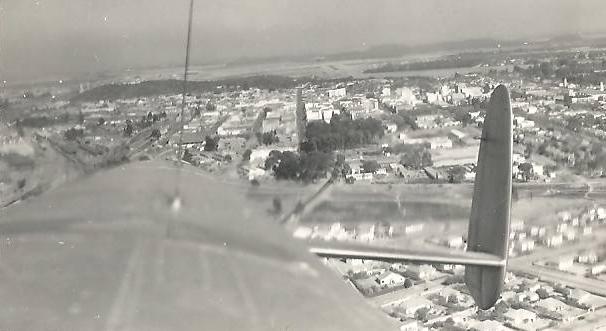 |
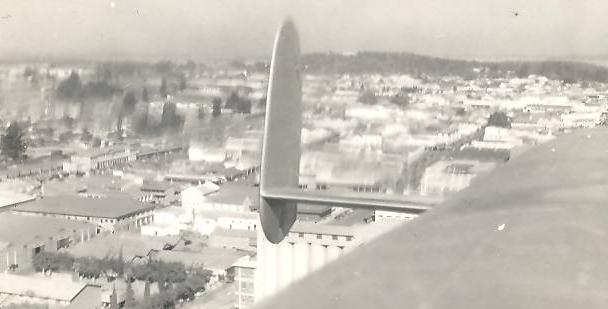 |
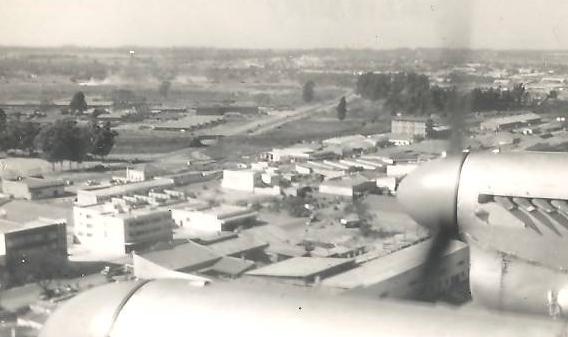 |
| Three aerial views of Salisbury in Southern Rhodesia |
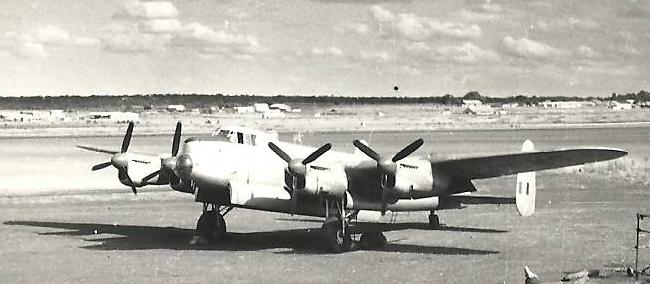 |
| Avro Lancaster of No 82 Sqn |
 |
| Another view from a Avro Lancaster of No 82 Sqn, location unknown |
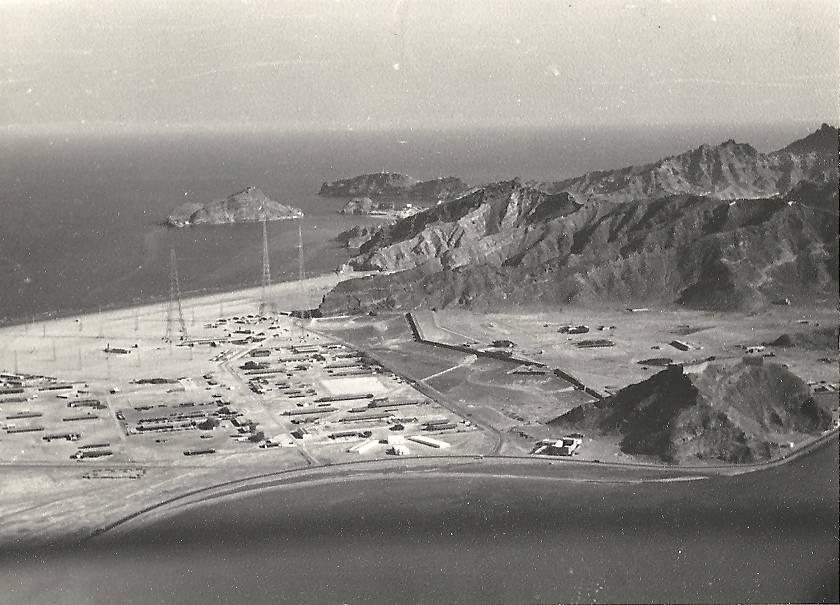 |
| Crater Camp (Aden) All photos taken by Vic Coots (electrician on the squadron), courtesy of Phill Rose |
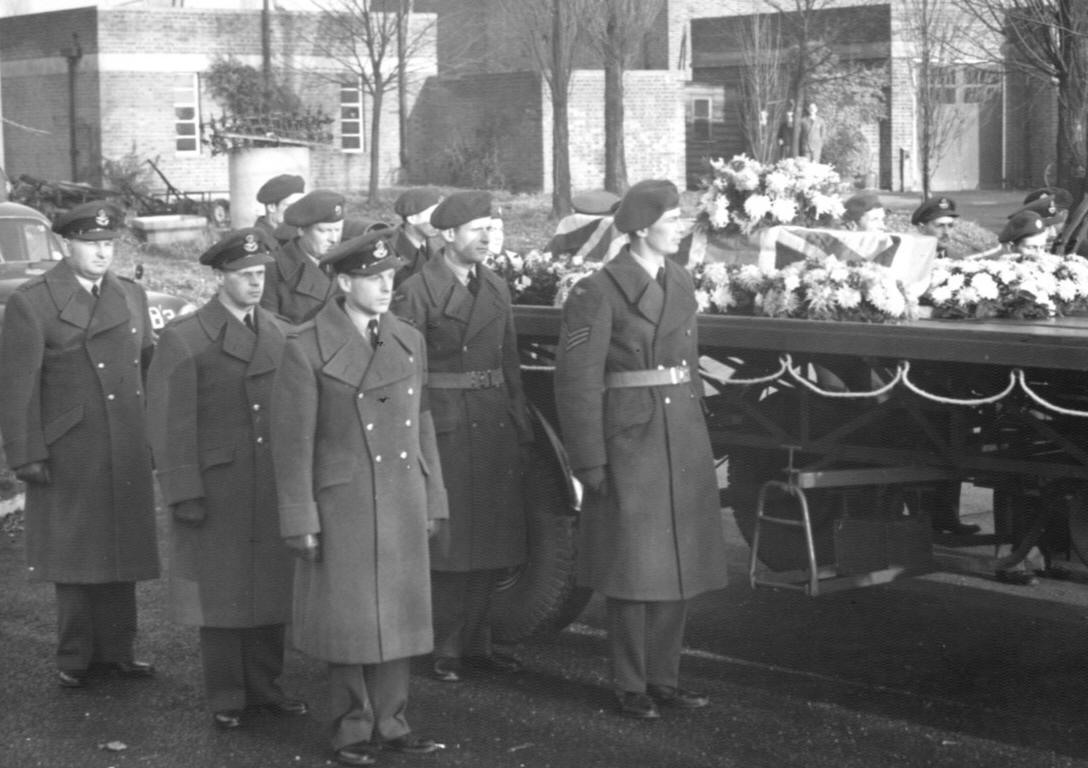 |
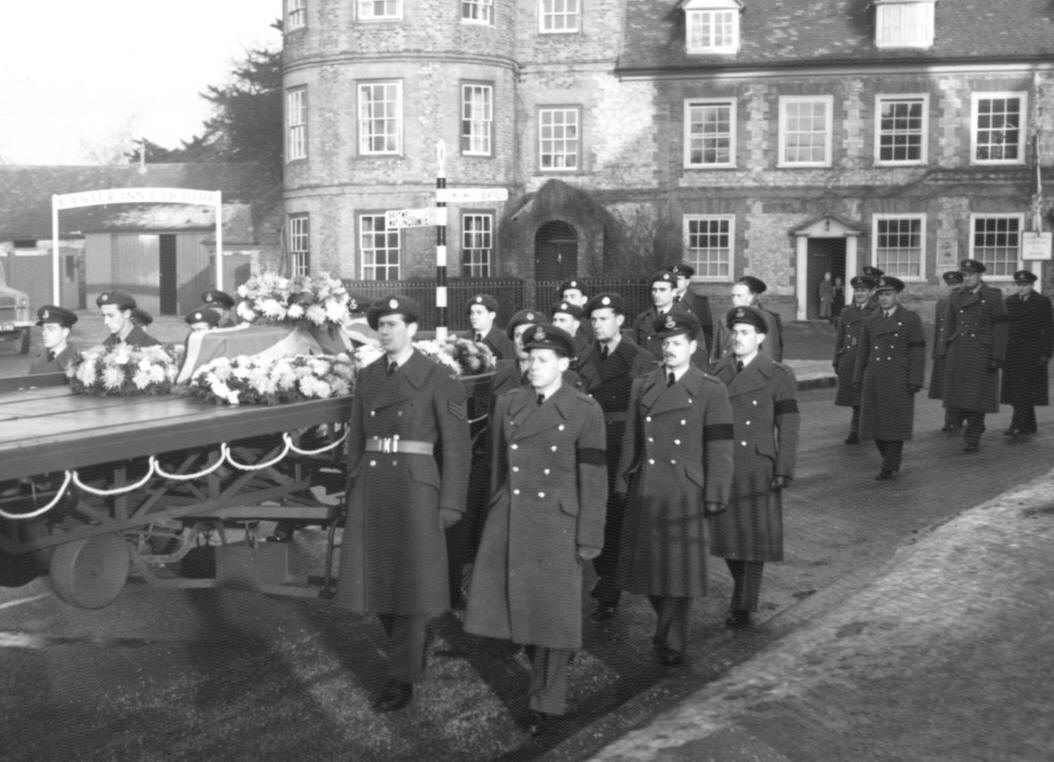 |
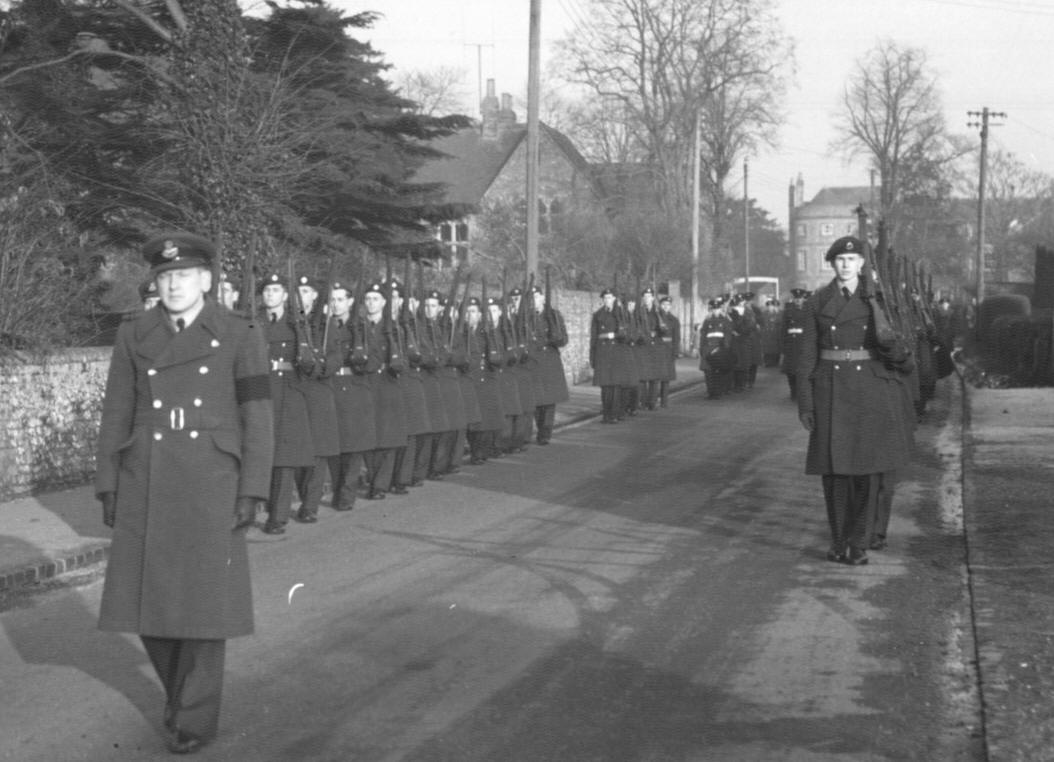 |
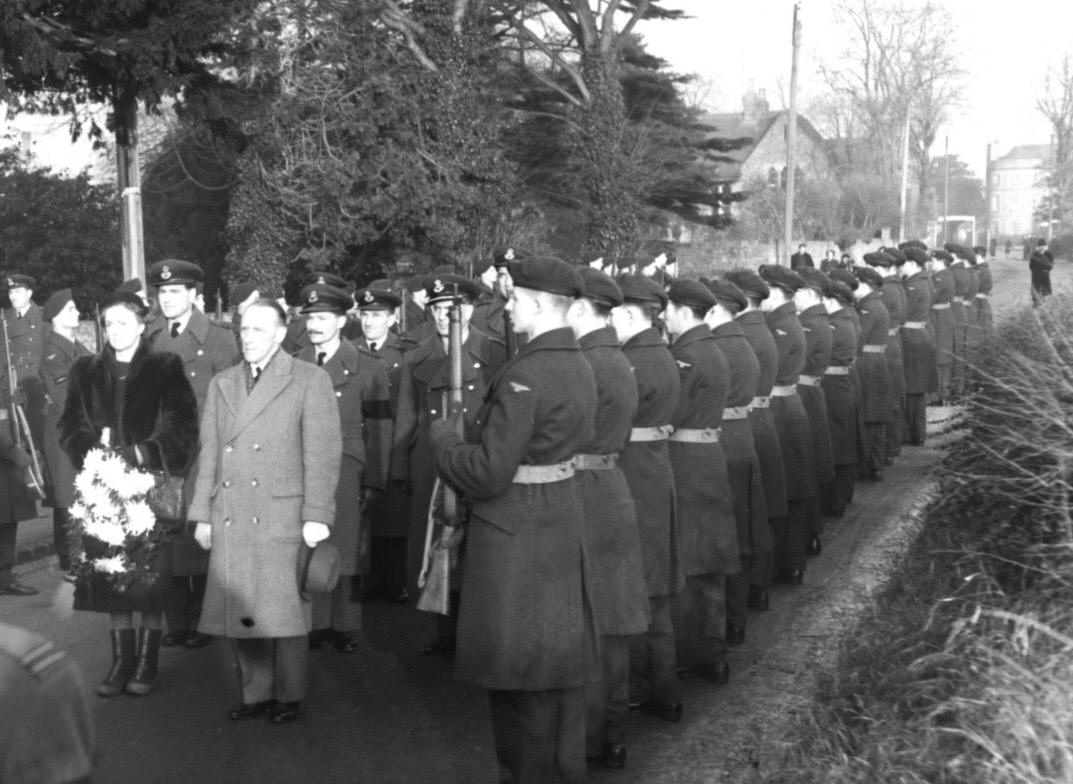 |
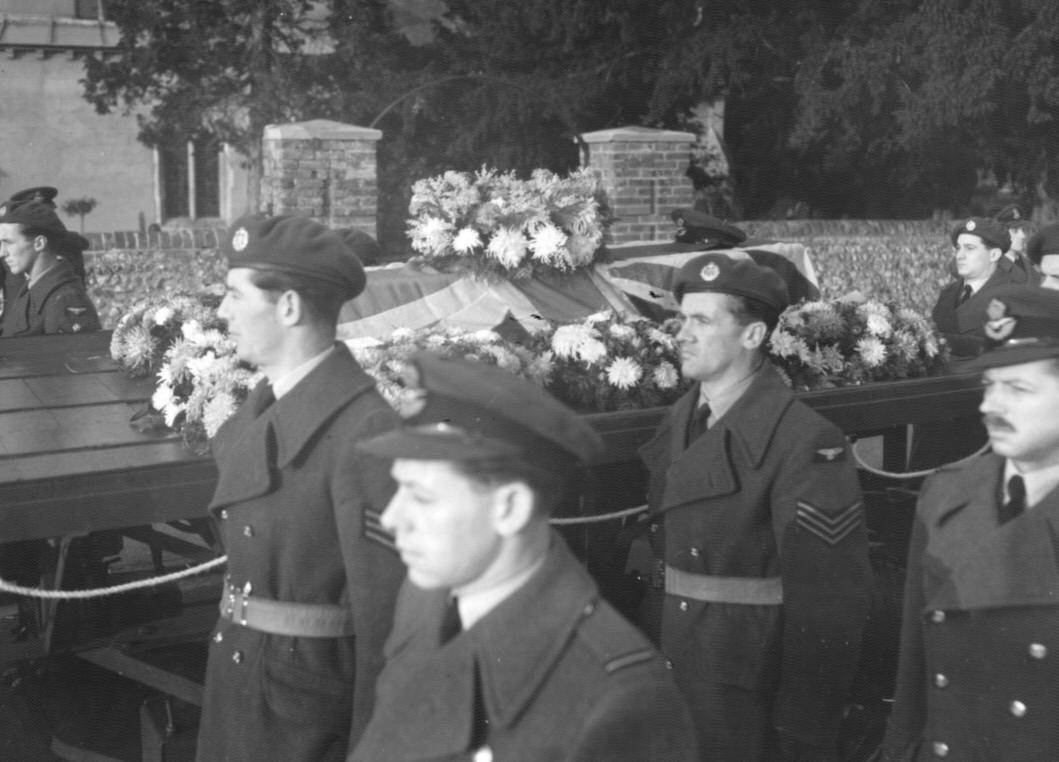 |
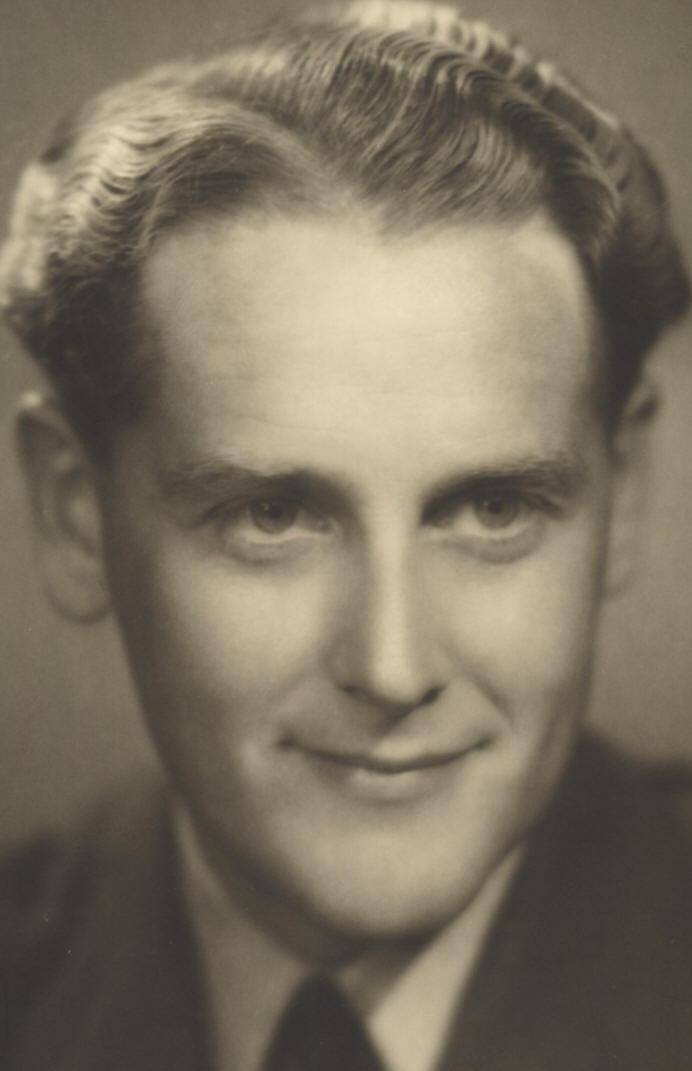 |
| The Funeral of Fg Off James Serge Gow,
killed in Lancaster GR Mk 1, RA803,
which flew into the ground near Benson on a GEE letdown. All photos courtesy of his nephew Anthony Menzies |
|
|
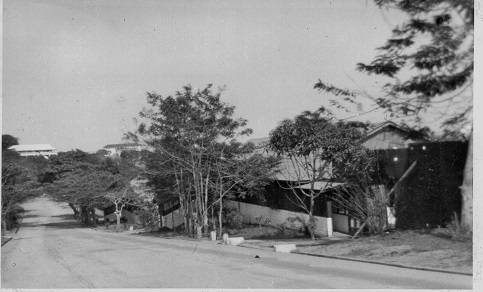 |
| Accommodation Bauchi Nigeria | Accommodation Takoradi Gold Coast |
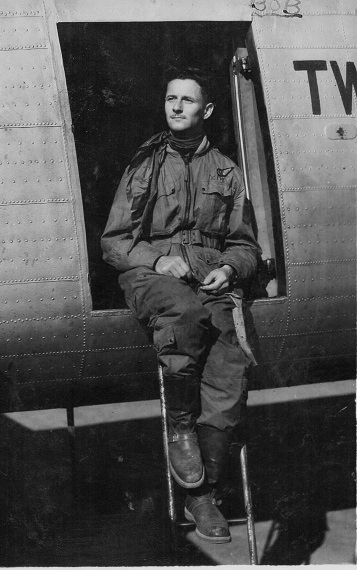 |
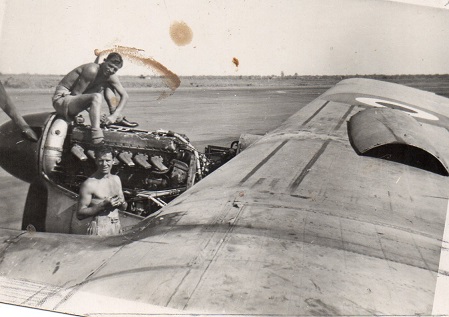 |
| Bob the Navigator | Ground Crew Engine Maintenance |
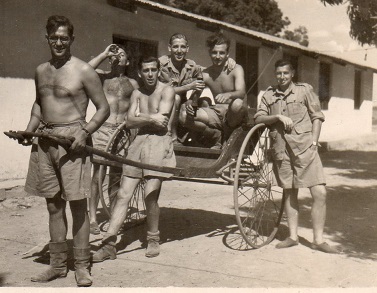 |
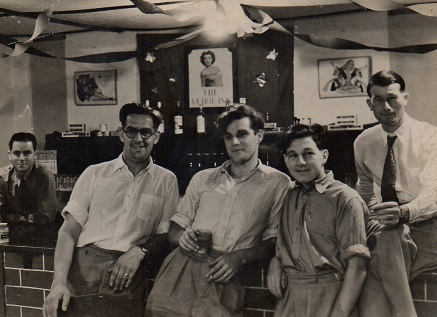 |
| Ground Crew Tabora Flt Lt Murray 3rd from left | Home Made Pub Tabora Tanganika Eric Cook 4th from left |
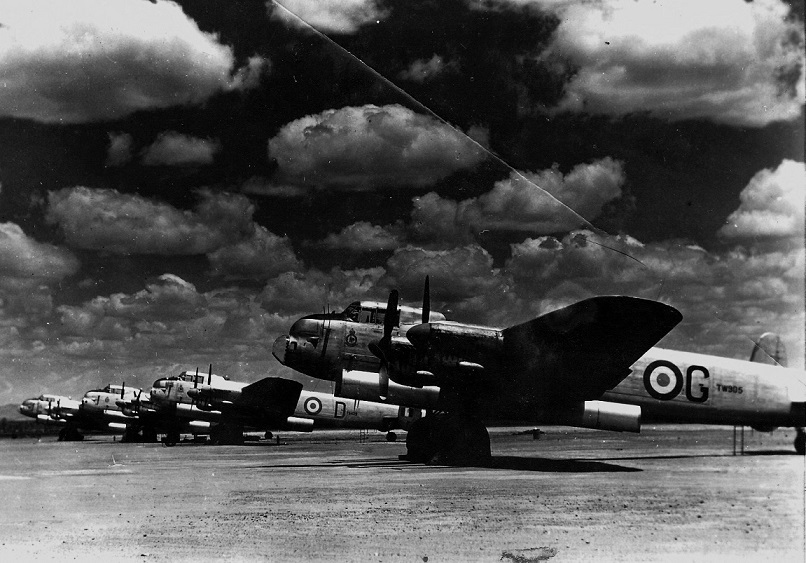 |
|
| Lancasters RAF Eastleigh Nairobi 1950 | |
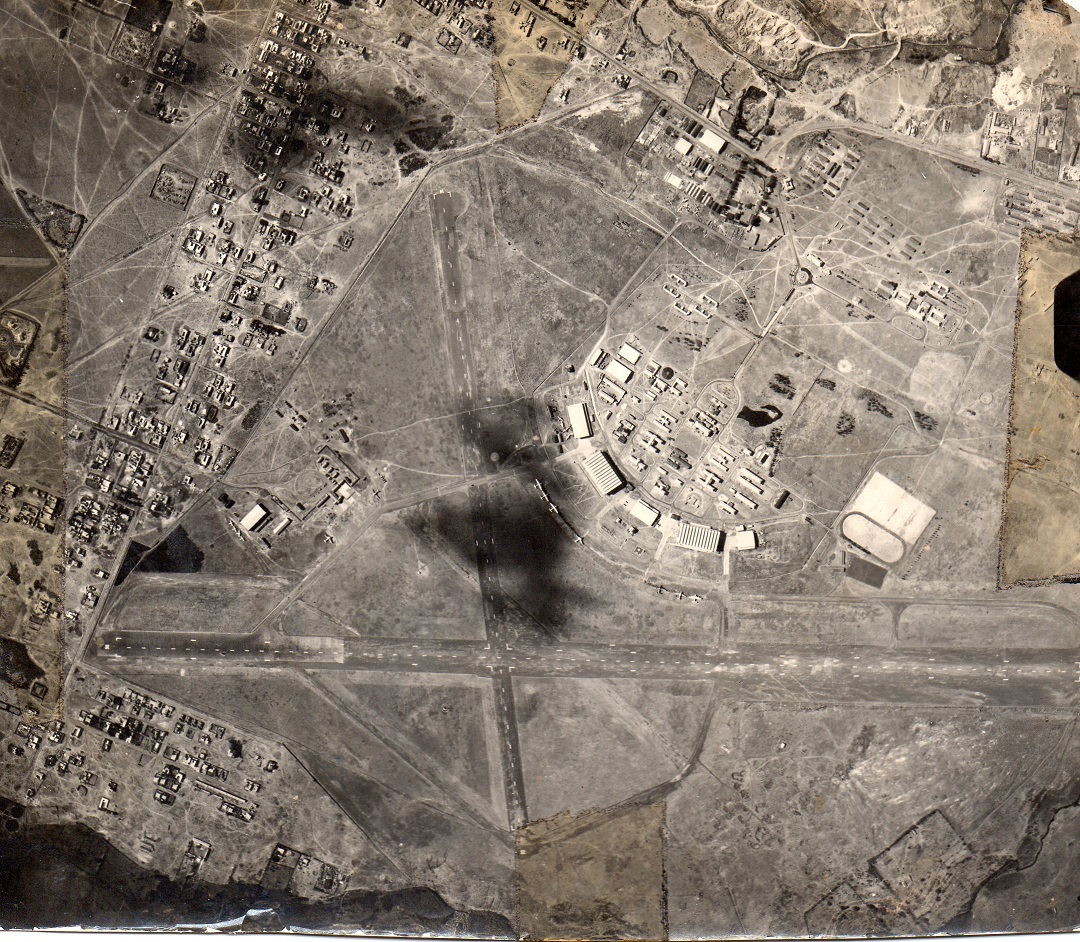 |
|
| RAF Eastleigh Nairobi Survey Photo | |
| All photos courtesy of Eric Cook | |
[Aircraft & Markings | Personnel, aircraft and locations | Commanding Officers]
 Formed
at Montrose on 7 January 1917, it moved to Spittlegate in Lincolnshire to begin
training. It began mobilising at Wyton in September 1917, moving to
Narborough at the end of that year where it received its operational equipment,
in the form of FE2b and FE2d aircraft. These were taken to France in March
1918, arriving just prior to the start of the German offensive on 21 March.
It operated for the remainder of the war in the night bombing and reconnaissance
role. Reduced to Cadre in February 1919, it returned to Hawkinge where it
disbanded on 31 December 1919.
Formed
at Montrose on 7 January 1917, it moved to Spittlegate in Lincolnshire to begin
training. It began mobilising at Wyton in September 1917, moving to
Narborough at the end of that year where it received its operational equipment,
in the form of FE2b and FE2d aircraft. These were taken to France in March
1918, arriving just prior to the start of the German offensive on 21 March.
It operated for the remainder of the war in the night bombing and reconnaissance
role. Reduced to Cadre in February 1919, it returned to Hawkinge where it
disbanded on 31 December 1919.
The squadron reformed at Turnhouse in Scotland on 4 August 1936. It was now equipped with Hawker Hinds and operated in the day bomber role. The squadron moved south and joined no 5 Group at Scampton in March 1938 and shortly afterward, in October, began to receive new equipment in the form of Handley Page Hampdens. Amongst its members at this time was Guy Gibson, who would later win the VC for leading the raid against the Ruhr Dams in May 1943.
When war broke out the squadron began to carry out ‘precision’ raids against German naval and coastal targets, but it soon became obvious that daylight operations were far to costly and along with the majority of Bomber Command, No 83 switched to night operations. In December 1941, the Hampdens began to be replaced by the Avro Manchester, but whilst the airframe was a good design, the Rolls Royce Vulture engines proved totally underpowered and unreliable and the squadron only had to operate the type for five months before replacements arrived in the form of Lancaster, basically the same airframe as the Manchester but now equipped with four Rolls Royce Merlins.
The squadron continued as part of No 5 Group until August 1942, when it was transferred to the Pathfinder Force at RAF Wyton, which later became No 8 (Pathfinder) Group. It now operated as a marker unit for the Main Force of Bomber Command. However, in April 1944, No 5 Group regained its old squadron when No 83 was returned to Coningsby, where it became the ‘Pathfinder’ unit for No 5 Group. It had been planned to send No 83 to the Far East but the dropping of the Atomic Bomb in August 1945, put an end to these plans and in October 1946 the squadron relocated to Hemswell following re-equipment with Lincolns in the previous July. The squadron remained at Hemswell until December 1955 when it disbanded. From 1 Feb 1949 until disbanded the squadron had been linked with No 150 Squadron.
However, it did not remain disbanded for long as on 21 May 1957 the squadron reformed at Waddington as the RAF’s first Vulcan squadron. It handed over its B Mk 1 aircraft to No 44 Squadron in August 1960 and moved to Scampton where it received the B Mk 2 capable of carrying the ‘Blue Steel’ stand-off bomb. It remained at Scampton in this role until finally disbanded on 31 August 1969.
| Standards | Battle Honours* |
|
Western Front, 1918: Somme, 1918: France & Low Countries, 1940: Channel & North Sea, 1939-45: Invasion Ports, 1940: Biscay Ports, 1940-44: Fortress Europe, 1940-44: German Ports, 1940-45: Ruhr, 1940-45: Berlin, 1940-45: Normandy 1944: France & Germany, 1944-45: |
Squadron Codes used: -
| Allocated Nov 1938 - Sep 1939 | |
| OL | Sep 1939 - Apr 1951 |
| AS | To be used for visit to Chile in 1946, changed to GB |
| GB | Used on aircraft for visit to Chile - October 1946 |
[Aircraft & Markings | Personnel, aircraft and locations | Commanding Officers]
 Formed
on 7 January 1917 at Beaulieu as a fighter squadron, it was August before its
operational equipment arrived in the form of SE5As and September before the unit
moved in France. It continued to operate along the Western Front for the
remainder of the war and afterwards joined the Army of Occupation in Germany,
until 12 August 1919 when it returned to Tangmere as a cadre, where it disbanded
on 30 January 1920. The squadron reformed on 13 August 1920 at Baghdad, moving
to Shaibah in September, where it remained for the next 20 years. Its
initial equipment was DH9As (until January 1929) and these were replaced by
Wapitis (beginning October 1928), Vincents (December 1934) and Blenheims Is (
February 1939).
Formed
on 7 January 1917 at Beaulieu as a fighter squadron, it was August before its
operational equipment arrived in the form of SE5As and September before the unit
moved in France. It continued to operate along the Western Front for the
remainder of the war and afterwards joined the Army of Occupation in Germany,
until 12 August 1919 when it returned to Tangmere as a cadre, where it disbanded
on 30 January 1920. The squadron reformed on 13 August 1920 at Baghdad, moving
to Shaibah in September, where it remained for the next 20 years. Its
initial equipment was DH9As (until January 1929) and these were replaced by
Wapitis (beginning October 1928), Vincents (December 1934) and Blenheims Is (
February 1939).
Following the outbreak of war in the Middle east in June 1940, 84 was sent to Egypt in September, but was one of the units that was sent to aid the Greeks in November 1940. Evacuated in April 1941 the squadron returned to Iraq but in October it rejoined the war in the Western Desert. However, it was soon on the move again as in January 1942 the squadron was sent to the Far East to reinforce British Units in Sumatra, but by the time they arrived the situation was untenable and the ground echelon was evacuated to India in February with the remaining personnel arriving there in early March. Re-equipment began with Blenheims but these were soon removed as the squadron had been earmarked to receive the Vultee Vengence dive-bomber. However, these were delayed in arriving and it was December 1942 before the squadron received any and February 1943 before operations began again.
In July 1944 the squadron was taken off operations to allow it to convert to the Mosquito but problems with the wooden structure in tropical conditions led to delays and although the Vengences were retired in October 1944, it was February 1945 before any Mosquitoes arrived. Before the squadron could fully work-up on the new aircraft the Japanese surrendered and the squadron found itself posted to Singapore, from where it sent detachments to Java to protect British forces still operating there, retrieving POWs. In May 1946 the squadron moved to Malaya and then back to Singapore in September, where it converted to Beaufighters in November.
No 84 returned once again to Iraq in November 1948, receiving Brigands in February 1949, however, in1950 the squadron returned to Singapore to take part in Operation Firedog, remaining there until disbanding on 20 February 1953. At Fayid in Egypt, on the same day, No 204 Squadron was re-numbered No 84. It was now operating in the transport role equipped with Valettas, remaining at Fayid until December 1955 when it relocated to Abu Sueir. When the British pulled out of Egypt in March 1956, the squadron transferred to Nicosia in Cyprus, where it disbanded on 31 December 1956. The same day the squadron was reformed in Aden by redesignating the Aden Protectorate Communications and Support, operating Valettas, although Pembrokes and Sycamore helicopters were operated for the first few months of 1957. Beverleys were added to the strength in 1958, although the Valettas were retained until August 1960 when they were passed to No 233 Squadron.
British withdrawal from Aden led to another move in August 1967 when it relocated to Sharjah and at the same time it converted to Andover C Mk 1s. It moved to Muharraq in December 1970, remaining in the Persian Gulf until disbanding on 1 Oct 1971. On 17 January 1972 No 1563 Flight and a detachment from No 230 Squadron was amalgamated into a new 84 Squadron at Akrotiri in Cyprus. Equipped with Whirlwind HAR Mk 10s, it was tasked with supplying air support to UN forces on the island and ASR duties around its coast. In March 1982 the Whirlwinds were replaced by Wessex HC Mk 2s until April 1985. From June 1984 until November 1994, some ex-Naval Wessex HC Mk 5Cs were operated but then the HC2s were taken back on strength and these remained until 2003. That year a detachment of No 203 (Reserve) Squadron took over 84's commitment whilst the squadron trained on its new aircraft, The Griffin HAR Mk 2, (equivalent to the Bell 412). These are operated on a leasing agreement, being owned and serviced by a civilian company but flown by RAF personnel to military standards. In April 2023 No 84 Squadron ceased operations with the Griffin, with its role being assumed by a detachment of Puma IIs supplied by No 33 Squadron from Benson.
| Standards | Battle Honours* |
| Award of Standard originally announced on 7 Sep 1943,
effective from 1 Apr 1943 but
presented:- lst - 5 January 1956 2nd - 23 October 1980 AM Sir Keith Williamson. 3rd - 8 November 2001 AVM T W Rimmer Laid up at Beaulieu on 27th July 2003 |
Western Front,
1917-1918: Cambrai,
1917: Somme, 1918: Amiens: Hindenburg Line:
Egypt & Libya, 1940-1942: Greece, 1940-1941: Iraq, 1941: Habbaniya:
Syria, 1941: Malaya,
1942: North Burma, 1944: Manipur, 1944:
Iraq, 1920: Iraq, 1923-1925: Iraq, 1928-1929: |
Squadron Codes used: -
| UR | Allocated Apr 1939 - Sep 1939 |
| VA | Sep 1939 - Mar 1941 |
| PY | Jan 1945 - Dec 1946 |
 |
 |
|
| Photographs of a Victoria of No 70 Sqn and a crashed Vincent of No 84 Sqn (photos - courtesy of Jim Wyse) | ||
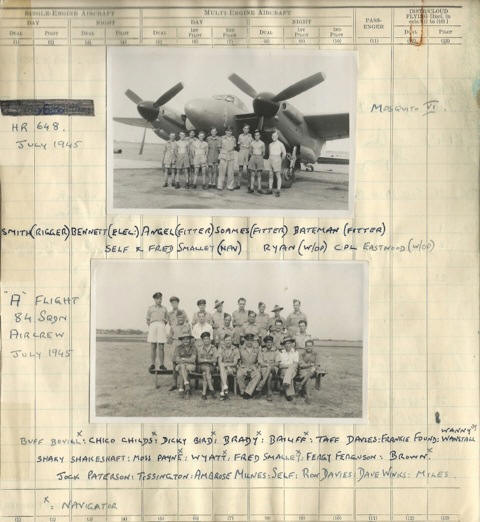 |
| A page from the Pilot's Flying Log Book of I
L B Aitkens with pictures of 'A' Flight, No 84 Sqn taken in 1945 Photo courtesy Peter Aitkens |
[Aircraft & Markings | Personnel, aircraft and locations | Commanding Officers]
No 84 Squadron Association: - Brendan Cottrell, 67 Hillhouse Road, Downend, Bristol, BS16 5RT. Tel No. 0117-987-1058. e-Mail: brendancottrell@blueyonder.co.uk
 Formed
as a fighter squadron at Upavon on 1 August 1917, the squadron was equipped with
SE5As, which it took to France in May 1918. In March 1918, the squadron
received Maj W A Bishop VC as it's CO, who in turn was replaced by Maj 'Mick'
Mannock VC, making it one of the few squadrons to be commanded by two VC
holders. It operated for the remainder of the war on fighter and ground
attacks sweeps until returning to Britain in February 1919 and disbanding on 3
July the same year.
Formed
as a fighter squadron at Upavon on 1 August 1917, the squadron was equipped with
SE5As, which it took to France in May 1918. In March 1918, the squadron
received Maj W A Bishop VC as it's CO, who in turn was replaced by Maj 'Mick'
Mannock VC, making it one of the few squadrons to be commanded by two VC
holders. It operated for the remainder of the war on fighter and ground
attacks sweeps until returning to Britain in February 1919 and disbanding on 3
July the same year.
The squadron reformed at Debden on 1 June 1938 from 'A' Flight of No 87 Squadron. Following two temporary CO's, it's first 'full time' CO was Sqn Ldr D F W Atcherley, one of the famous twins. Initially equipped with Gladiators, these were replaced in September 1938 by Hurricanes. It was thus equipped when it moved to France as part of the Air Component of the BEF in September 1939. Following the German attack on France, the squadron was involved in supporting the ground forces until it only possessed four serviceable aircraft, when it returned to Britain to re-equip.
Re-equipped the squadron rejoined the fray in June and undertook operations during the first half of the Battle of Britain, but in September it moved to Church Fenton for a rest and in October to Kirton-in-Lindsey where it began night operations. These operations continued on its return south but success was hampered by a lack of radar, so Defiants were received in January 1941. However, these proved to be short-lived as Havocs arrived the following month. The squadron continued in the night fighter role, with Mosquitos from August 1942, until March 1943 when it began intruder operations over enemy territory. On 1 May 1944 the squadron became part of No 100 Group and whilst continuing the intruder role, it also took on the bomber support role, accompanying the Main Force on its deep penetrations mission into Germany.
With the end of the war, the squadron was retained as part of the UK based night fighter defences, continuing to use the Mosquito NF Mk 36 at West Malling until 1951 when the jet powered Meteor NF Mk 11 arrived. These, in their turn were replaced by NF Mk 12s and 14s, with both types being flown until disbandment on 31 October 1958 at Church Fenton, where the squadron had moved in September 1957. During this period, 11 February 1949 - 28 February 1952, No 85 was linked to No 145 Squadron, a process designed to keep famous squadron numbers active.
The squadron reformed less than month later on 30 November when No 89 Squadron was re-numbered. The unit was now based at Stradishall and was equipped with the Gloster Javelin. Initially equipped with the FAW Mk 2 and 6, these were superseded by the FAW Mk 8 in May 1960, by which time the squadron was at West Malling and these remained its sole equipment until 31 March 1963 when the squadron was disbanded again at West Raynham, to where it had moved in September 1960. The following day, however, the number was revived by renaming the Target Facilities Squadron at West Raynham.
The squadron was now equipped with a mixture of Meteor F Mk 8s, until 1970, and various models of Canberra and these were used to provide target facilities for both ground and air based customers. The squadron was eventually disbanded by being absorbed by No 100 Squadron on 19 December 1975. Meanwhile the same day, the number plate was passed to a Bloodhound unit with its HQ at West Raynham and operational flights at North Coates ('B') and Bawdsey ('C') as well as West Raynham ('A') itself. On 1 October 1989, 85 absorbed No 25 Squadron and added Flights at Barkston Heath ('D'), Wattisham ('E') and Wyton ('F'). On 1 December 1990, the Flights at North Coates, Bawdsey, Barkston Heath and Wyton were disbanded, the remaining Flights and Squadron HQ finally following on 1 July 1991. In around 2008 the number was allocated to the Yorkshire Universities Air Squadron and No 9 Air Experience Flight at RAF Church Fenton, but disbanded in late 2011.
| Standards | Battle Honours* |
| Award
of Standard
originally announced on 17 Jul 1962, effective from 1 Apr 1962 but presented:-
4 June 1965 |
Western Front, 1917-1918: France & Low Countries, 1939-1940: Battle of Britain, 1940: Home Defence, 1940-1944: Fortress Europe, 1943: Normandy, 1944: France & Germany, 1944-1945: |
Squadron Codes used: -
| NO | Allocated Sep 1938 - Sep 1939 |
| VY | Sep 1939 - Apr 1951 |
[Aircraft & Markings | Personnel, aircraft and locations | Commanding Officers]
*Honours in Black are those the squadron has a been granted the right to emblazon on the Squadron Standard, but does not do so.
Honours in Red are those actually emblazoned on the Squadron Standard
Honours in Blue are those the squadron has not been granted the right to emblazon on the Squadron Standard
Squadron badge image on this page is courtesy of Steve Clements
© Crown Copyright is reproduced with the permission of the Directorate of Intellectual Property Rights
This page was last updated on 31/12/23©
![]() Organisational
Index
Organisational
Index ![]()